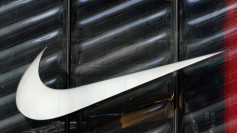Alphabet's Google unveiled a palette of ten skin tones on Wednesday, calling it a step forward in creating gadgets and apps that better serve people of color.
For years, tech companies have relied on the Fitzpatrick scale to classify skin tones for computer vision algorithms. The system, which was originally designed for dermatologists in the 1970s, only has six skin tones, which could contribute to AI's well-documented failures in identifying people of color.
Google is now incorporating a 10-skin tone standard known as the Monk Skin Tone (MST) scale across its products, from Google Search Images to Google Photos and beyond. The advancement has the potential to reduce bias in data sets used to train AI in a variety of applications ranging from health care to content moderation.
According to a Twitter thread from Xango Eyeé, a responsible AI product manager at Google, the project dates back to a summer 2020 effort to make AI "work better for people of color." The company detailed the new system's potential impact across its many products at today's Google I/O conference.
Google will also make the MST open source, which means it could eventually replace Fitzpatrick as the industry standard for assessing the fairness of cameras and computer vision systems.
The company claims that its new Monk Skin Tone Scale replaces the Fitzpatrick Skin Type, a flawed standard of six colors that had become popular in the tech industry for determining whether smartwatch heart-rate sensors, artificial intelligence systems including facial recognition, and other offerings show color bias.
Fitzpatrick, according to the researchers at Tech, underrepresented people with darker skin. Last year, Reuters exclusively reported that Google was working on an alternative.
The company collaborated with Harvard University sociologist Ellis Monk, who studies colorism and felt dehumanized by cameras that did not detect his face or reflect his skin tone.
Monk curated 10 tones using Photoshop and other digital art tools - a manageable number for people who help train and evaluate AI systems. He and Google polled 3,000 people in the U.S. and discovered that a 10-point scale matched their skin just as well as a 40-shade palette.
The Monk scale, according to Tulsee Doshi, head of product for Google's responsible AI team, is "a good balance between being representative and tractable."
It is already being used by Google. Beauty-related Google Images searches, such as "bridal makeup looks," can now be filtered by Monk. Image searches for "cute babies" now return photos with a variety of skin tones.






